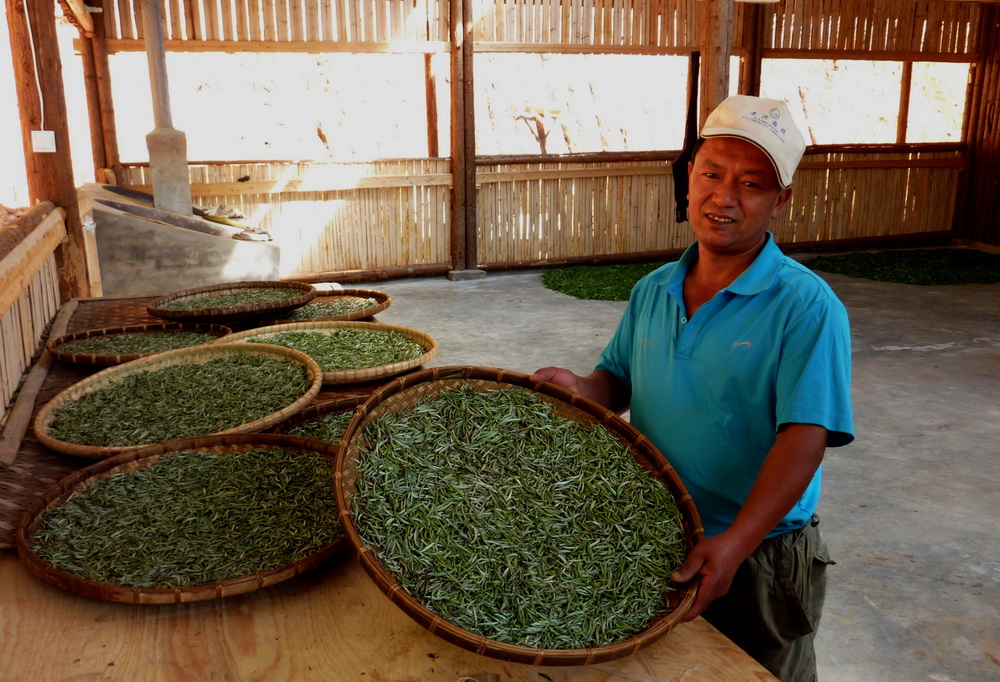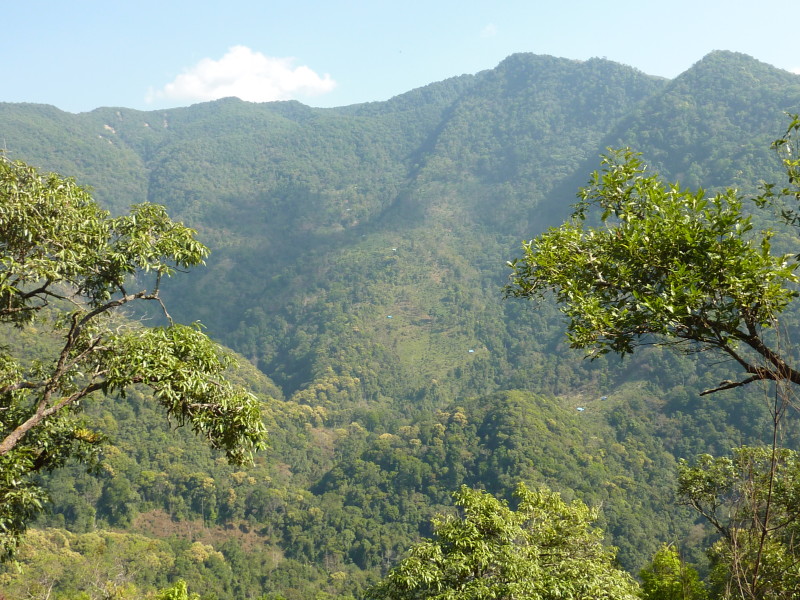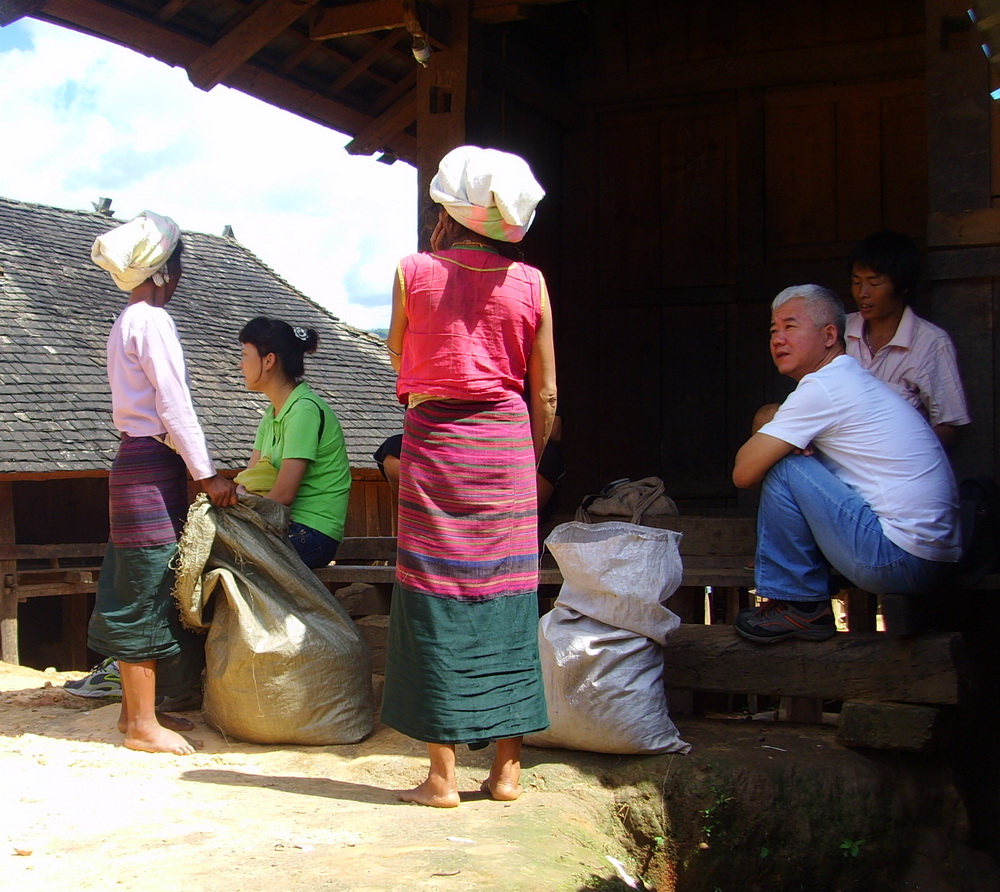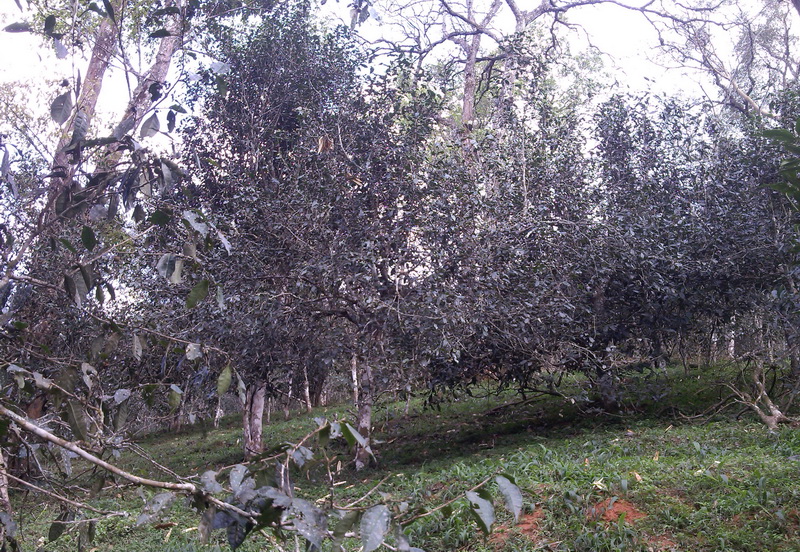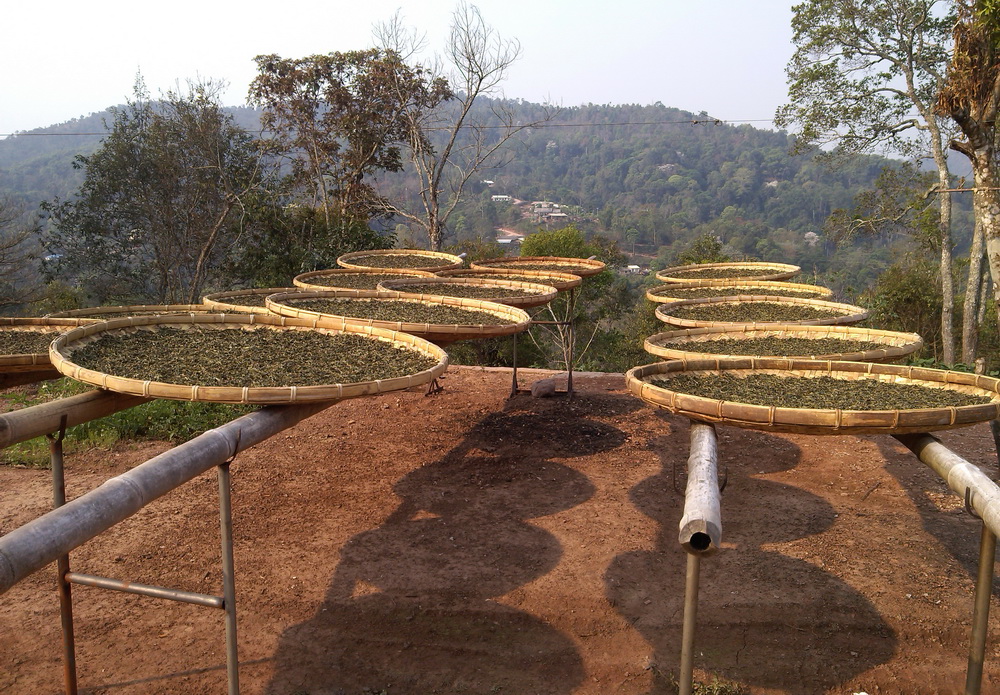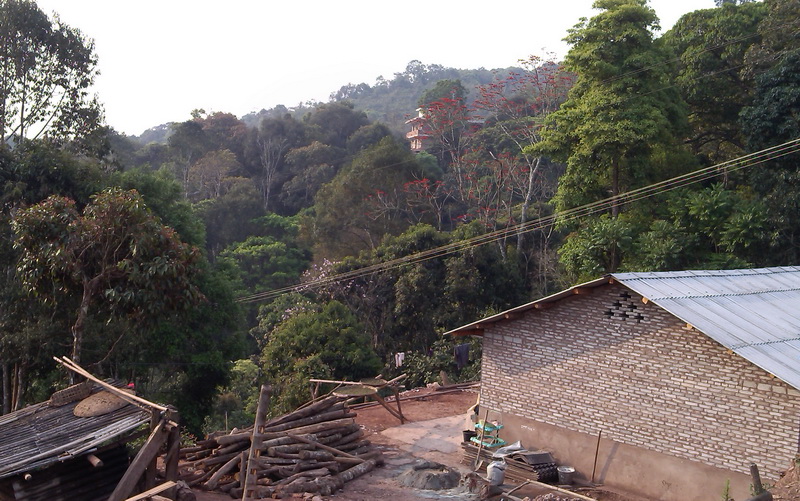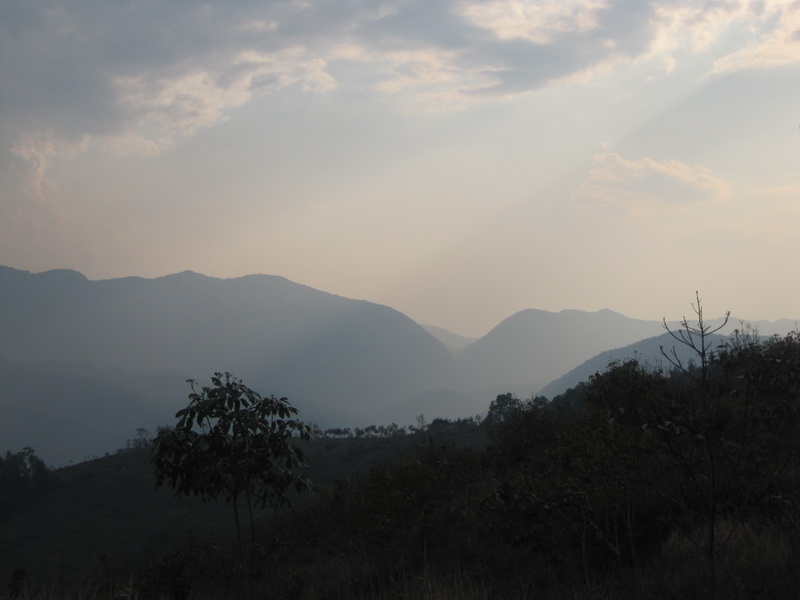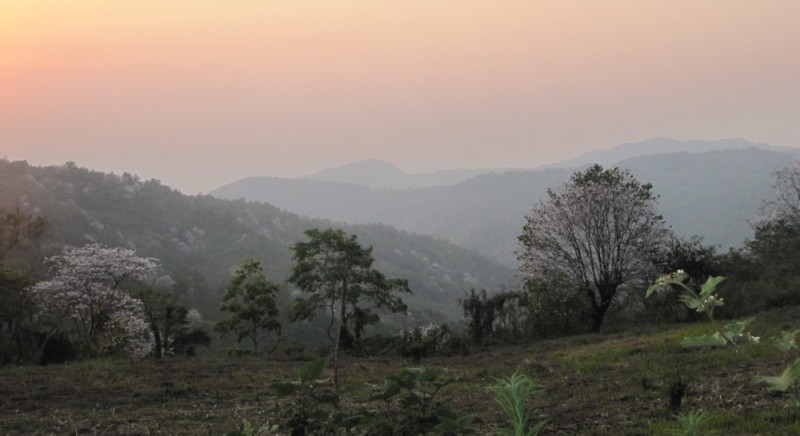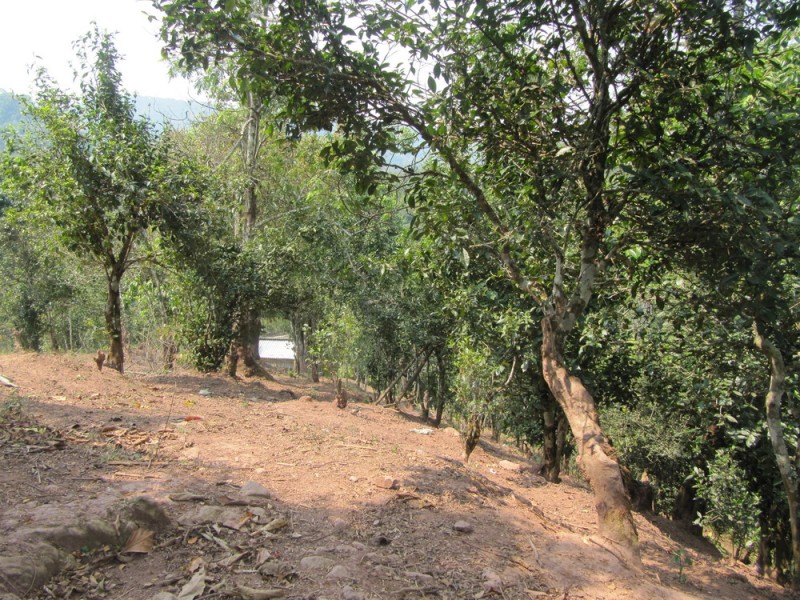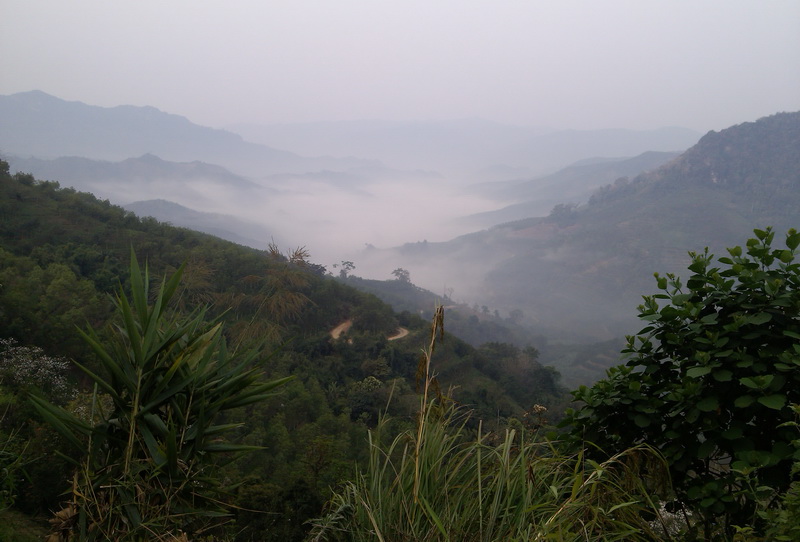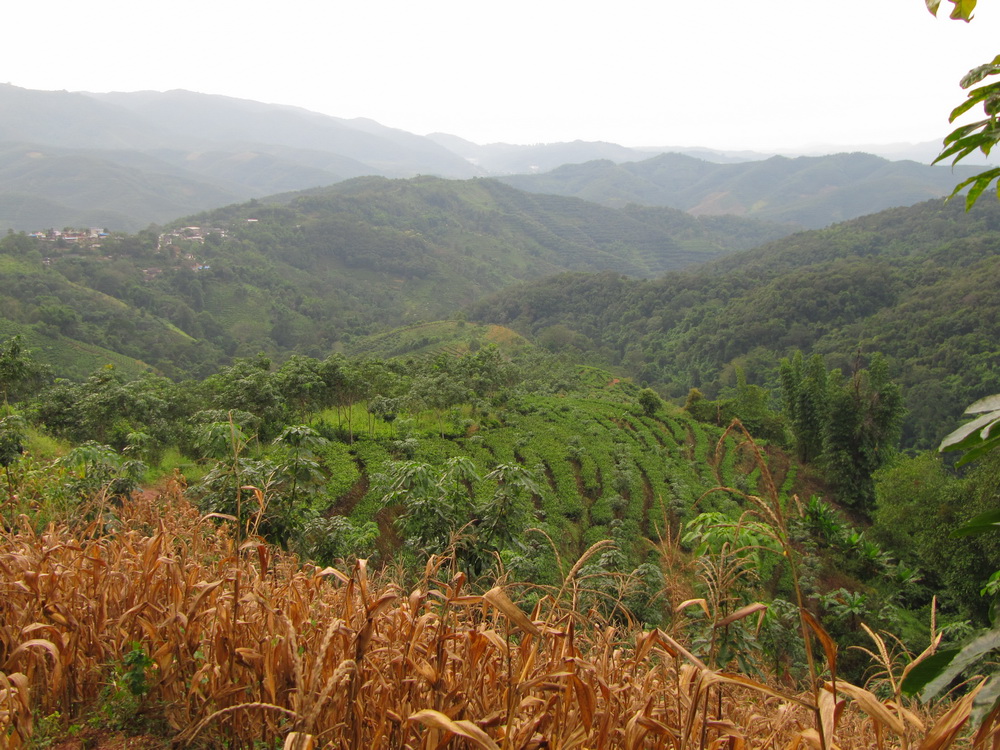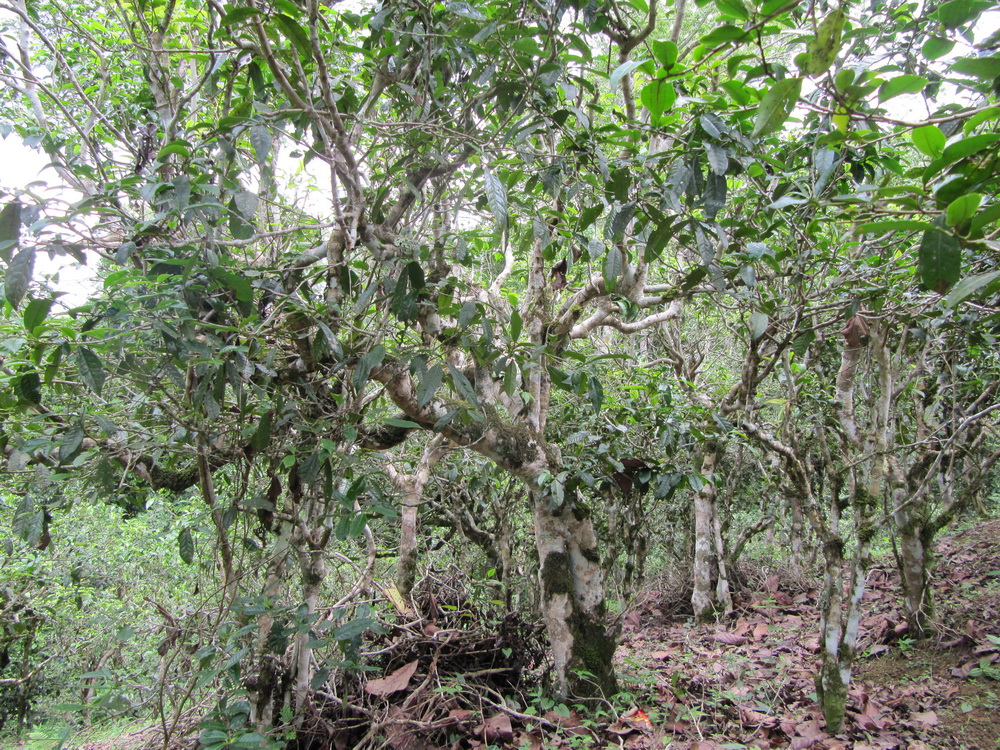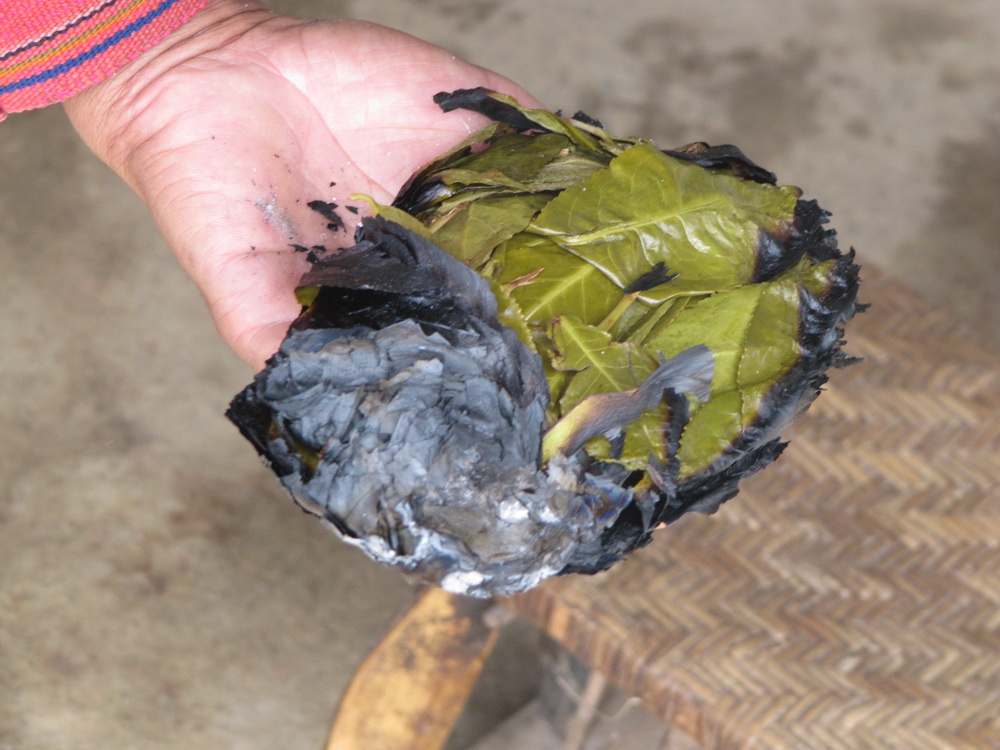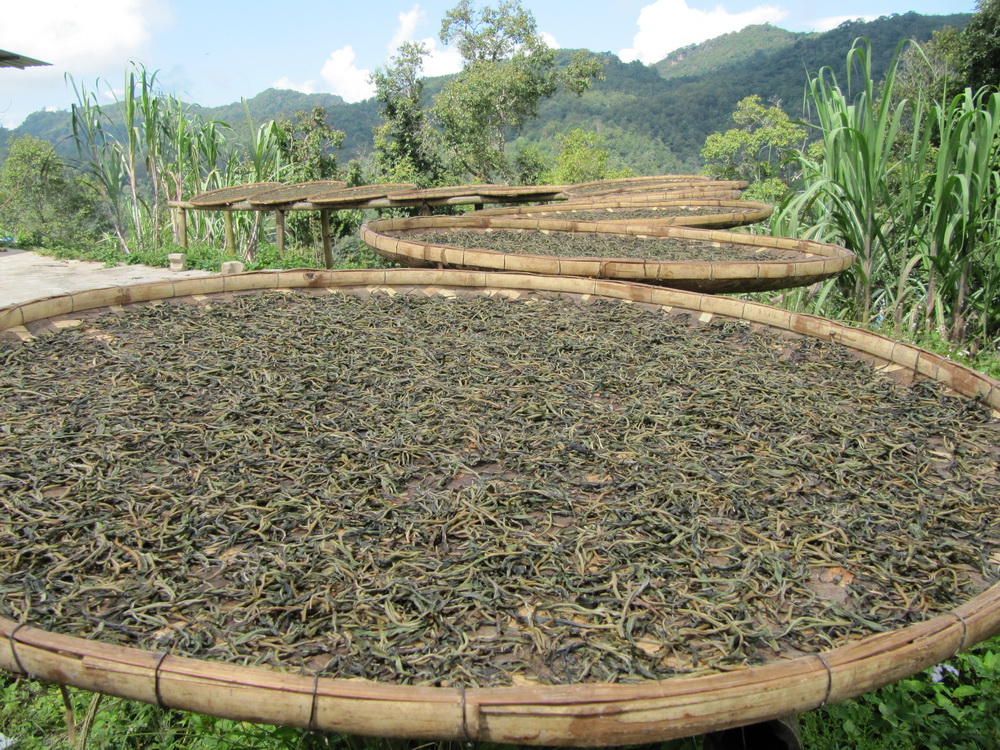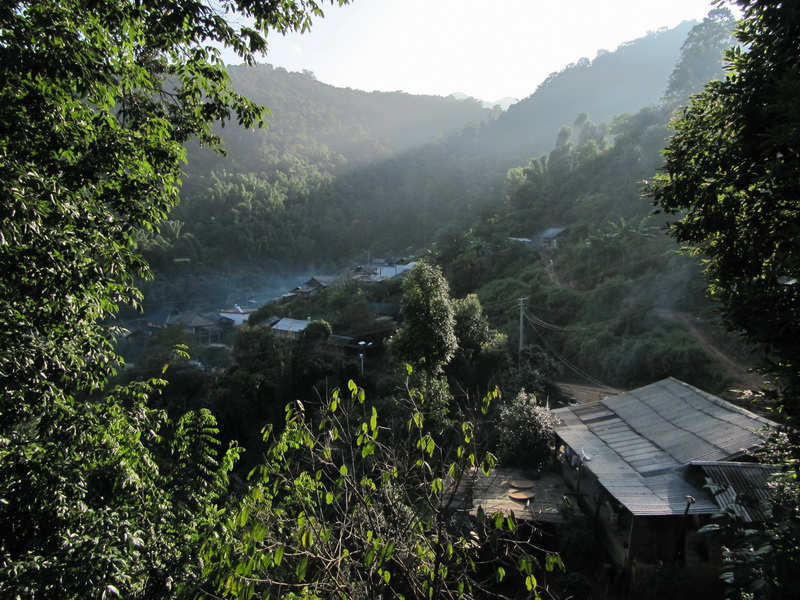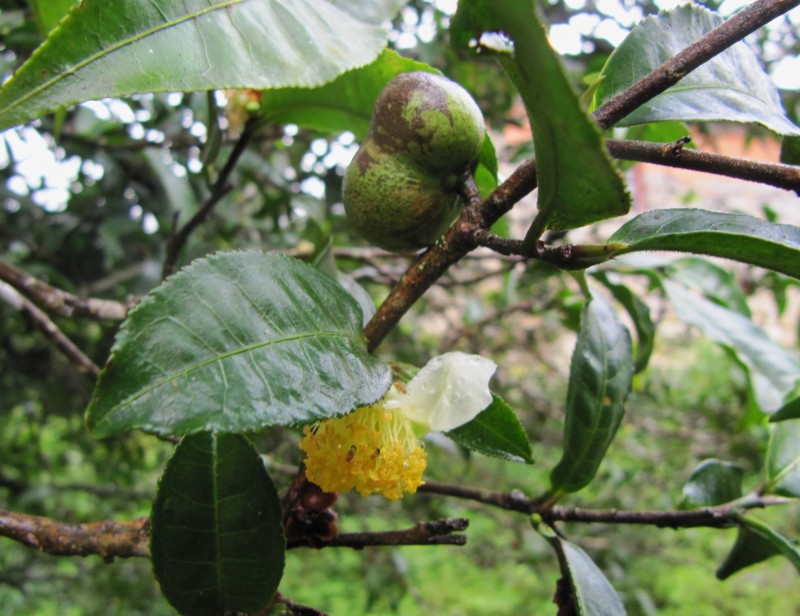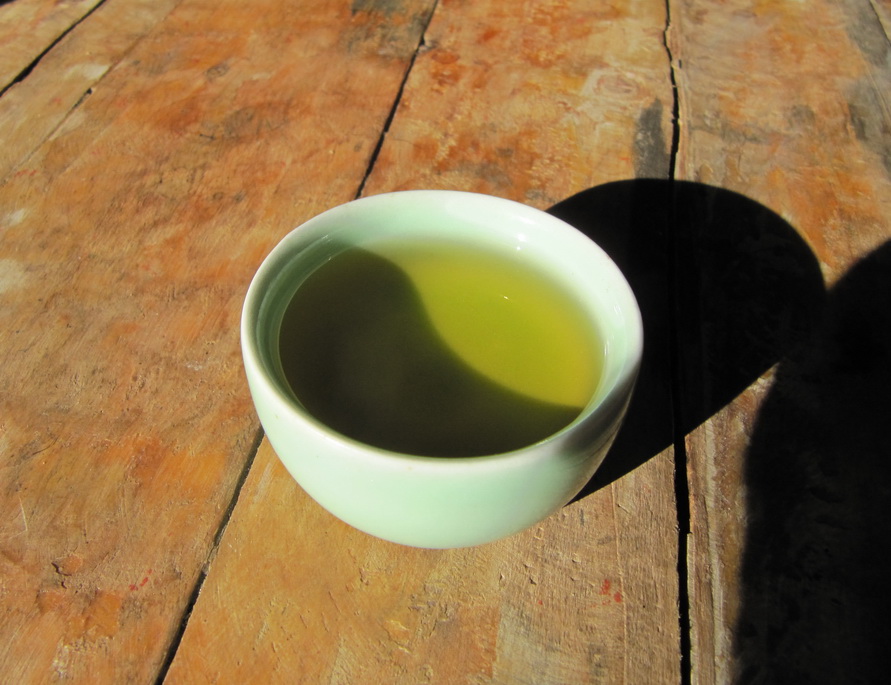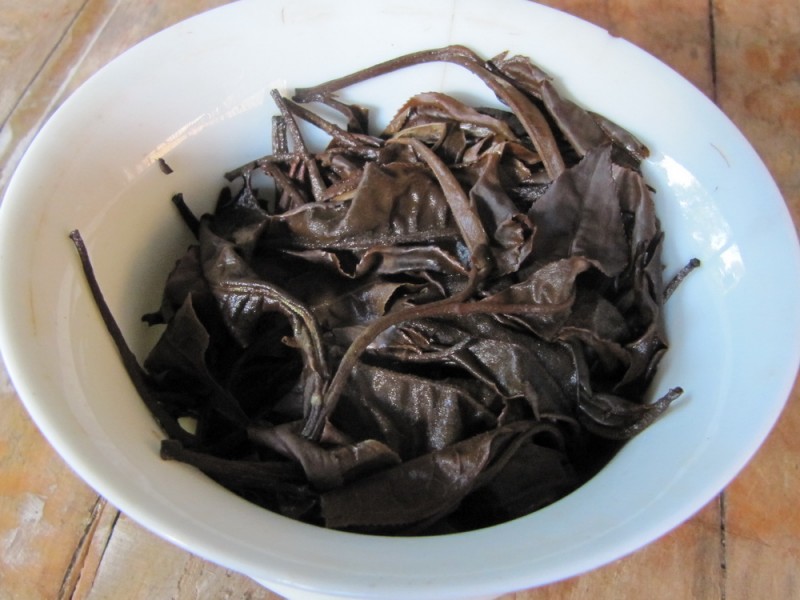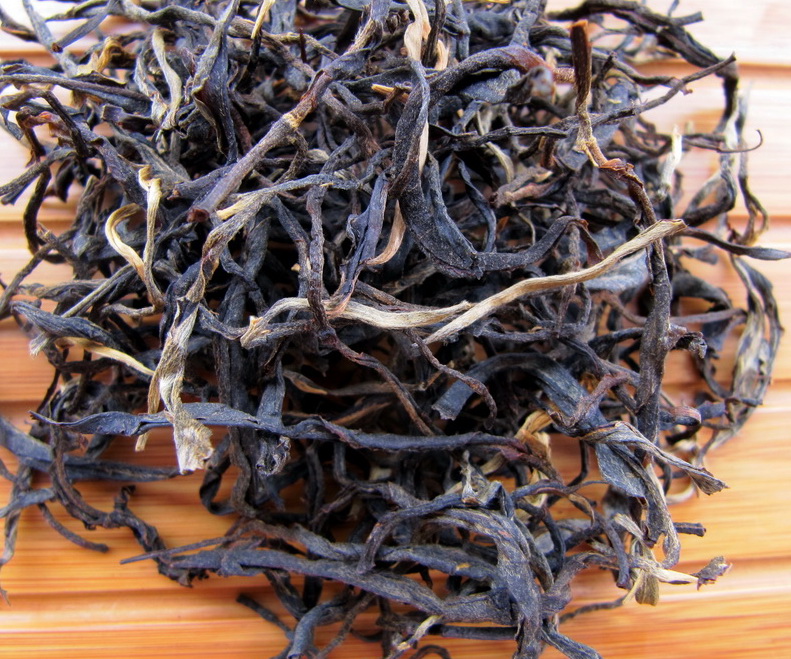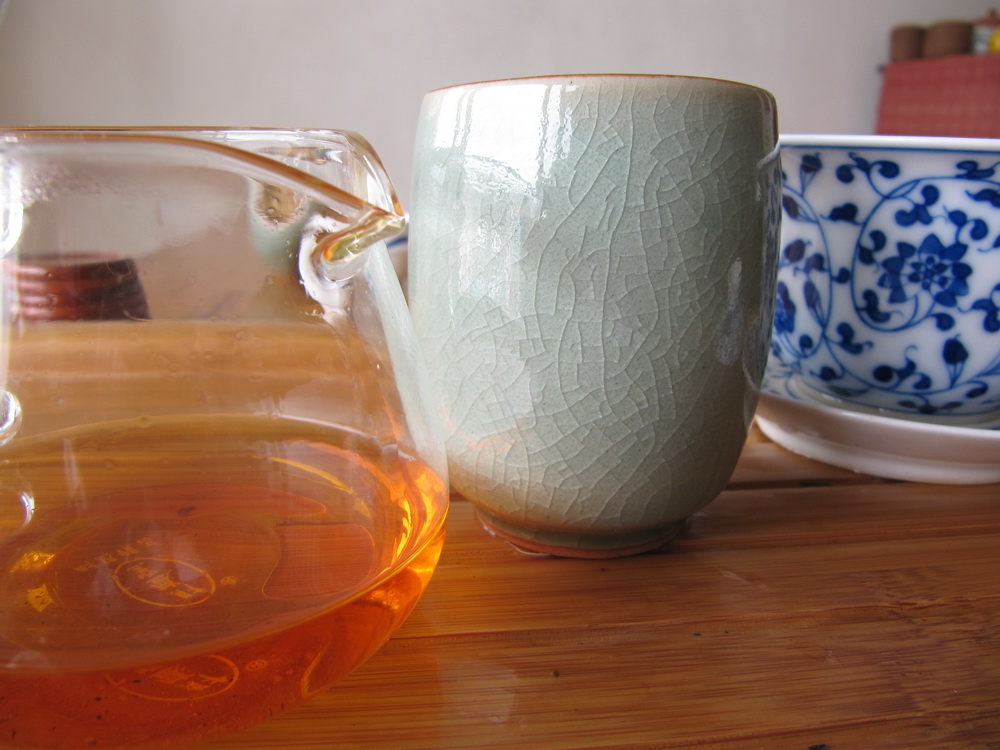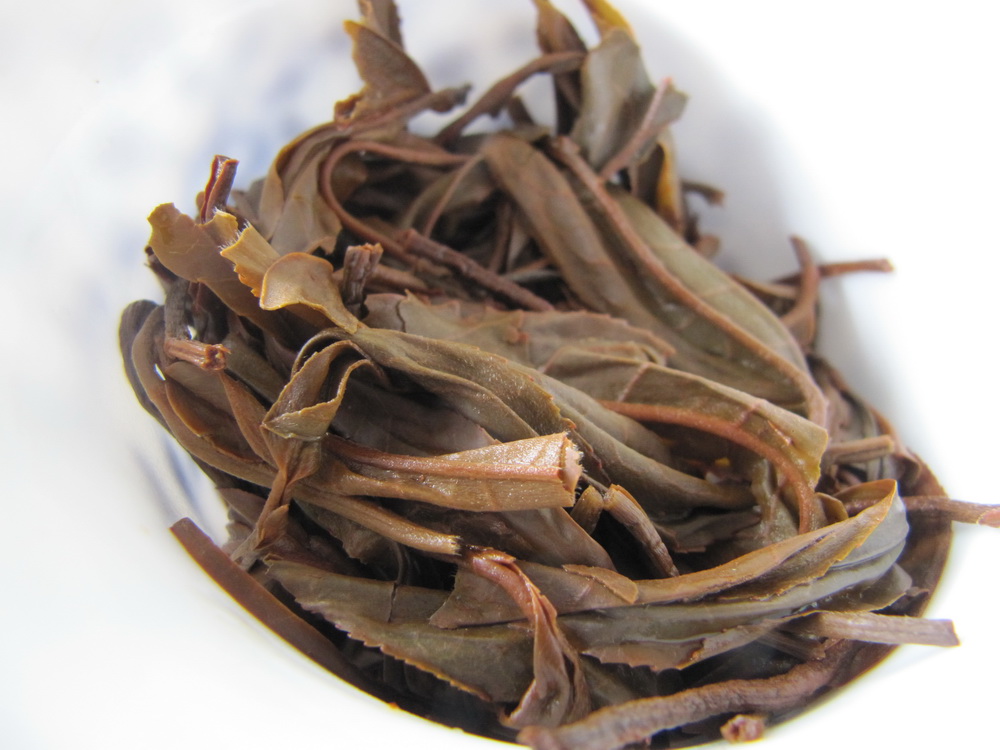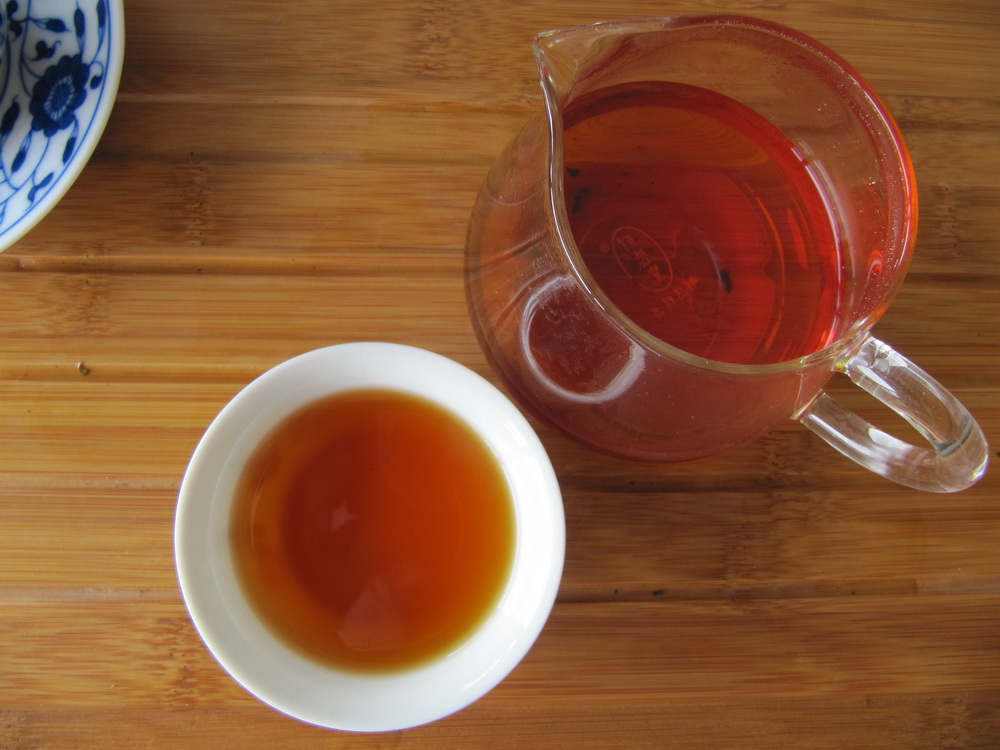- This post started off as a response to a question that someone once in a while will ask about how we source tea, but then it developed into a little monologue about visiting tea villages looking for tea. I have left that part till the end.
So first, let’s go back a few years, to when someone once suggested to me, rather humourously I thought, that we might consider changing our farmer – singular – as though there could possibly have been only one.
A couple of things become clear very quickly: if you’re not just sourcing tea from a few places that are near each other, you need a team of people. Some people you can squarely rely on. You can’t be in two places at the same time, and though regional differences exist – Menghai flushes earlier than Liu Da Cha Shan, or whatever, there’s a limit to how much ground you can cover in the relatively brief period of time that is (early) spring tea harvest.
Different areas & villages can have slightly different approaches too. There’s a reason for this, so it makes sense to draw on local knowledge and skills, rather than have a ‘one size fits all’ approach. Of course, a skilled tea maker can no doubt quickly adapt, but in any case, having one person make all your tea is a physical impossibility, dictated by distance and topography.
So then, the ways that I source tea are essentially these:
- Arrange for pickers to pick leaves from a tea garden we have identified, which are then taken to a place where we have someone take in the fresh leaves and make the tea. The trees may not belong to the person who makes the tea. The farmer who owns the trees sells the fresh leaves and may be involved in the picking. In this way we have the most control over the process. It is also useful where a farmer has good trees, but hasn’t necessarily mastered the skills of making good tea.*
The caveat, if it need be stated, is that the person taking in the fresh leaves must be skilled at recognising fresh leaves from different trees and sources, be familiar with, and trust the pickers, and know exactly where the tea is coming from in order to avoid tea from elsewhere being brought in.
In recent years this has become much more common, particularly in places like Gua Feng Zhai where there are often concerns about the origin and purity of ‘mao cha’. The year before last someone said to me ‘Gua feng Zhai fresh leaves are expensive but their mao cha is cheap.’ It’s not completely true, but you get the idea.
- Another situation where we might make tea in a similar way is where the tea garden is too far from the workshop to carry the fresh leaves out, and so the tea is made on the spot and carried out as mao cha. Some tea from the Yiwu area is still like that – anywhere where the tea gardens are too remote to be able to carry fresh leaves out to the place of processing – e.g. Bai Cha Yuan before they made a new road from Ding Jia Zhai to the tea gardens.
- The third situation is to have a known farmer with good trees and tea making skills make the tea themselves. This also works well, but one needs to be sure of the skill of the tea maker. If the quantity is relatively small – a few kilos – it may be no problem, but a farmer who can make 5 kg well, may have trouble making 30 all to the same standard.
One also needs to be clear if the tea farmer takes in leaves from other villagers – many do and are honest about it, but not all, so one needs to be sure of sources and consistency.
- The fourth situation, which is not necessarily separate from the above, is to work with others in the business. i.e. have others who help monitor or supervise the tea making and sourcing. This could be people who are effectively paid or take a cut, or it could be others in the tea business with whom one has a good relationship and with whom you pool resources.
- The next situation is buying on spec from a sample. One can occasionally can get some good tea like this, but mistakes can be made. If the volume is small, so is the risk. In any case, if someone comes to you with a sample of good tea, it’s worth the trouble to go and take a look at where the tea is said to be coming from. I have on occasion bought tea in this way.
- The last approach is going cold to a village with no knowledge or connections , this can be fun, but very hit and miss.
You only have to look around online at various blog posts by people who have done this to see that it is probably the least reliable method of sourcing tea, but makes for a good story. Unless you get very lucky, this is at best exploratory – laying the ground for something in the future. It’s rather like a paper chase…
It’s something I personally enjoy doing – going somewhere I’ve never been before and seeing what turns up. But it takes time. You can’t accomplish much in a day. It generally takes a few visits to start to get a handle on the situation in any one village.
Because of this, it’s worth considering how best to go about it.
Ideally maybe, you would look at the trees first, assuming they’re nearby and you can find them, then visit the farmer with the best looking gardens. But this is neither practical nor reliable, as you likely still need someone to show you round and in any case, the owner of the best looking gardens may not make the best tea, or it may already have been sold.
So a better option is going to farmers’ houses and see whose tea making looks the best (most professional, consistent,) and try some of their tea. You can always look at the tea gardens later.This is also time consuming. The first tea you get offered is likely not the best – the tea farmer is also testing you: he’s not going to sell you his best tea if you can’t tell the difference – and you could easily spend a few hours getting to the better stuff. If you do that in a couple of places, the day has gone. It’s impossible to go round every house in a village in this way, so inevitably there’s some luck involved in where you go.
It’s a long time since I read Walden, but I remember the observation that “A farmer’s wealth is measured by the extent to which the barn overshadows the house.” or something like that.
It’s useful logic. You’re probably not going to find the best tea by going to the poorest looking house in the village – particularly one where they have old tea trees. Anyone now, who has old tree tea gardens, should be getting a decent price for their tea if it’s any good. Of course, there could be other factors: the farmer has old trees, but because of size, poor management, etc. it doesn’t provide a good income, or they’re just not good at business – A Hungarian winemaker told me his father would say “A good winemaker must be a good man, must be good wine-maker, and be a good businessman.” It’s the same.
So a reasonable way to start is to see who looks like they’re doing decent business. It doesn’t of course mean their tea is good. They might just be good at doing business, or the owners just took out a hefty loan to build the house, but there’s a chance you’ll find something, and they might know what good tea is, and maybe know where to find it.
Occasionally you might get lucky: someone ordered 60 kg of tea, but then didn’t come through, or only bought 30 kilos in the end – spring tea buying can be a little frenzied and sometimes folks bite off more than they can chew – so, if you’re timing is right, there it is waiting for you.
A couple of other things are important:
The first, is village politics. Villages often comprise of two or three extended families, and they don’t always all get on. Once one gets to know one farmer in a village, they will likely rather jealously guard the connection. One has to be a fine diplomat, or a little thick skinned to navigate the network of connections both within, and outside a village.
Secondly, if you don’t know what the tea from village X should taste like, it’s better not to attempt any serious tea buying. It’s foolish to assume you’re beyond being fooled.
You should know roughly what the price is before you go. Tea prices are actually fairly transparent: very early in the spring, when there may only be a few kilos of tea around, if you were to ask how much tea ‘A’ is, the reply will likely be ‘I don’t know, the price hasn’t come out yet’ “不知道,价格还没出来。”. But a week or two later everybody knows – ‘So-so Pa Sha is about X a kilo, higher quality, around X+Y′, or whatever it is.
Like taking an un-metered taxi: to ask the price of going to ‘A’, only shows your ignorance. They see you coming. If you’re only buying 5kg of tea, the price will be higher than if you’re buying 50.
Bartering is worth it if you think you’re getting a bad deal and or, you don’t have too many hopes of developing a longer term relationship with the farmer. If you want to build mutual trust, trying to hack the farmer down on the price is not going to help much, but letting them know you have an understanding of quality and value is surely worthwhile.
*It is quite common for farmers to sell fresh leaves to someone else in their village, and in this way ensure a potentially less profitable, but more secure income. In the past it has been quite rare for farmers to make their own tea. The common practice was for farmers to pick leaves and sell them to a factory for processing.

